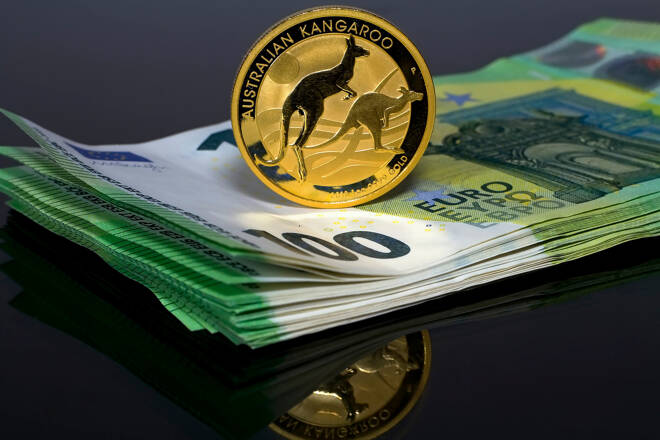Advertisement
Advertisement
AUD to USD Forecast: China Inflation and Trade and US Producer Prices
By:
The Chinese economy takes the spotlight on Friday, with trade and inflation data to influence the Aussie dollar.
Highlights
- The AUD/USD declined by 0.19% on Thursday, ending the session at $0.66871.
- Australian trade data and the US CPI Report influenced buyer demand for the Aussie dollar.
- On Friday, economic indicators from China and US producer prices need consideration.
Thursday Overview of the AUD/USD
The AUD/USD declined by 0.19% on Thursday. Reversing a 0.19% gain on Wednesday, the Australian dollar ended the session at $0.66871. The Australian dollar rose to a high of $0.67254 before falling to a low of $0.66469.
Chinese Economy in the Spotlight
On Friday, inflation and trade data from China warrant investor attention. A pickup in economic activity in China would be a boon for the Australian economy and the Aussie dollar.
China accounts for one-third of Australian exports, with 20% of the workforce in trade-related jobs. Significantly, Australia has a trade-to-GDP ratio above 50%.
Economists forecast exports to increase by 1.7% year-over-year in December, and imports to rise by 0.3%. In November, exports increased by 0.5%, while imports declined by 0.6%.
Inflation numbers also signal an improving demand environment, albeit modestly. Economists forecast producer prices to fall by 2.6% year-over-year in December after falling by 3.0% in November. Notably, economists predict consumer prices to increase by 0.2% after falling 0.5% in November.
Before the numbers from China, Australian home loan data for November also needs consideration. However, the China stats will be the focal point.
US Economic Calendar: US Producer Prices and the Fed
On Friday, US producer prices will draw investor interest. An upward trend in producer prices could signal an improving demand environment. Rising demand allows producers to increase prices and pass costs onto consumers. Producer prices are leading indicators for consumer price inflation.
Economists forecast producer prices to increase by 1.3% year-over-year in December. In November, producer prices rose by 0.9%.
A more marked increase in producer prices could draw the attention of the Fed. The Fed could delay rate cuts beyond March to curb spending and dampen demand-driven inflation.
Beyond the numbers, investors must also consider FOMC member commentary. FOMC member Neel Kashkari is on the calendar to speak on Friday. Reaction to the CPI Report and producer prices could move the dial.
Short-Term Forecast
Near-term trends for the AUD/USD will hinge on China data, US producer prices, and Fed chatter. A pickup in economic activity in China and softer producer prices could tilt monetary policy divergence toward the Aussie dollar.
AUD/USD Price Action
Daily Chart
The AUD/USD held above the 50-day and 200-day EMAs, affirming bullish price signals.
An AUD/USD break above the $0.67286 resistance level would support a move to the $0.68096 resistance level.
On Friday, the focus will be on China data and US producer prices.
However, a fall through the $0.66500 handle would bring the 50-day EMA and the $0.66162 support level into play.
A 14-period Daily RSI reading of 49.01 suggests an AUD/USD fall to the 200-day EMA before entering oversold territory (typically above 70 on the RSI scale).
4-Hourly Chart
The AUD/USD remained below the 50-day EMA while holding above the 200-day EMA, affirming bearish near-term but bullish longer-term price signals.
An AUD/USD break above the 50-day EMA and the $0.67286 resistance level would support a move to the $0.68096 resistance level.
However, a break below the 200-day EMA would give the bears a run at the $0.66162 support level.
The 14-period 4-Hourly RSI at 46.33 suggests an AUD/USD fall to the $0.66162 support level before entering oversold territory.
About the Author
Bob Masonauthor
With over 28 years of experience in the financial industry, Bob has worked with various global rating agencies and multinational banks. Currently he is covering currencies, commodities, alternative asset classes and global equities, focusing mostly on European and Asian markets.
Did you find this article useful?
Latest news and analysis
Advertisement
